Remembering Jean Seberg

November 13, 2013 marked what would have been the 75th birthday of the American actress, Jean Seberg (1938-1979). Examining Ms. Seberg’s career and how it was throttled is not only instructive, but relevant to our present, especially to creative professionals.
Born in Marshalltown, Iowa, Seberg first gained notoriety as an actor in 1957 when at the age of seventeen she played the historic figure Joan of Arc in Otto Preminger’s Saint Joan.
Critics panned the film, and pilloried the young actress. Some years later Seberg would say of the experience, “I have two memories of Saint Joan. The first was being burned at the stake in the picture. The second was being burned at the stake by the critics.” Little did Seberg know that in the end she would be burned at the stake by the U.S. government.
In 1959 Seberg co-starred with Peter Sellers (1925-1980) in a Cold War comedy from the U.K., The Mouse That Roared. It would be Seberg’s third film. “Mouse” told the story of an imaginary and totally inconsequential European fiefdom, whose government decided that the way to avoid economic collapse was declaring war on the United States, suffer defeat, then accept the conquering nation’s generous foreign aid.

“Mouse” was a slightly subversive political satire, but ultimately lighthearted, it did however capture the tenor of the times. Wildly popular at the time of its release, it was Sellers’ first starring role in film, and it established him as an international movie star.
I saw this film as a fifteen-year-old and never forgot it. Truth be told, forty-five-years later, I recently watched the film again and it dredged up memories of Ms. Seberg and her sad demise. I felt compelled to write this article.
In 1960 Ms. Seberg would star in Breathless, directed by Jean-Luc Godard, a film that not only secured her climb to stardom, but made her an icon of the French “new wave” cinema.
Seberg would come to spend much of her career in France. The rising political ferment taking place around the world no doubt had an effect on Seberg, and an upcoming starring role would put her in contact with an American director once blacklisted by the U.S. government.
In 1964 Seberg starred with Warren Beatty in director Robert Rossen’s Lilith. Rossen (1908-1966) had been a successful screenwriter, director, and producer, best known for films like All the King’s Men (1949) and The Hustler (1961); but because of his political views Rossen had come under suspicion by an America in the throes of Cold War anti-communism.
Robert Rossen was first called before the House Un-American Activities Committee (HUAC) in 1951 because he had been a member of the Communist Party U.S.A. from 1937 to 1949, however, he refused to testify. As with others who declined to answer the committee’s questions, Rossen was placed on an industry blacklist, and he was also unable to renew his passport, making overseas work impossible. When Rossen was called before HUAC for a second time in 1953, the committee succeeded in breaking him. He identified 57 colleagues affiliated with the Communist Party U.S.A., an act that ended the careers of those so named. HUAC rewarded Rossen for his co-operation by lifting the blacklist against him.
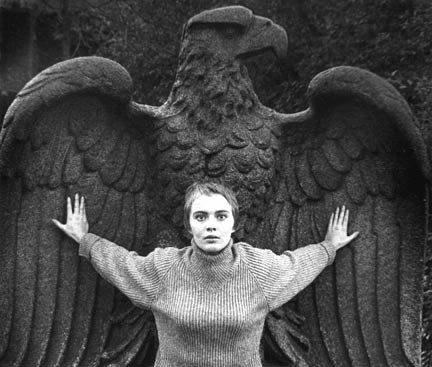
It is not hard to speculate on how Seberg reacted to the story of Rossen’s blacklisting, though she could never have imagined that much worse lay ahead for her.
An oft told story about the young Seberg was of her joining the National Association for the Advancement of Colored People (NAACP) in 1953 at the age of 14… the same year Robert Rossen was broken by HUAC. Seberg’s father counseled his daughter not to join the civil rights group, fearing people would think she was a communist, but she mailed in her membership form nevertheless, telling her father she did not care what people thought. Seberg joined the NAACP two years before Rosa Parks refused to give up her seat on a bus to a white man in Montgomery, Alabama, an act that initiated the historic Montgomery Bus Boycott – a landmark campaign in the African-American Civil Rights Movement.
Some of America’s best actors, writers, and film producers were silenced, blacklisted, and sentenced to prison by HUAC. For at least a decade scores were barred from working, others never regained their footing. Hollywood was thoroughly purged of all those with left-wing views, and motion picture and television output generally focused on non-controversial material.
It should be noted that in 1947, a freshman Republican Congressman from California named Richard M. Nixon accepted a seat on the House Un-American Activities Committee. He played an active, if not major role in HUAC, and formed a strong professional relationship with the director of the Federal Bureau of Investigation, J. Edgar Hoover. The FBI director shared files on American citizens with the Congressman, who became the 37th president of the U.S. in 1968. It would not be long before Nixon and Hoover implemented harsh methods to crush radical dissenters in the U.S., with Jean Seberg becoming one of their targets.
1968 was an explosive year; the Tet offensive in Vietnam began in January as protests against President Johnson (a Democrat) escalated in the U.S.; Martin Luther King Jr. was assassinated in Memphis, Tennessee on April 4; Democratic Senator Robert Kennedy was shot by a Palestinian militant named Sirhan Sirhan at the Ambassador Hotel in Los Angeles, and died on June 6. In August the Soviet Union invaded Czechoslovakia, meanwhile, Chicago police attacked antiwar demonstrators protesting against the Democratic Party National Convention. In October just prior to the opening of the Olympic Games in Mexico City, government troops and police massacred hundreds of pro-democracy demonstrators in Mexico City’s Tlatelolco Square. Along with millions of others, Jean Seberg was no doubt reeling from these events, and she acted upon her outrage.

In May 1968 Joshua Logan began filming his big-budget cinematic treatment of the hit Broadway musical, Paint Your Wagon. Starring Lee Marvin, Clint Eastwood, and Jean Seberg, the film cost around $20 million to make, an extraordinarily large film budget for the time.
Paint Your Wagon was released in 1969, however, the film did not make a return on its investment; much had changed in the world, and the public’s taste for musicals had diminished. The Hollywood production would be one of the era’s final musicals. It was in 1969 that Seberg’s left-wing political leanings came to the attention of the FBI.
In 1968 President Nixon and J. Edgar Hoover gave their attention to quashing America’s new left, unleashing COINTELPRO (the FBI’s Counterintelligence Program) against dissident political groups and individuals. The objective of COINTELPRO was to “expose, disrupt, misdirect, discredit, or otherwise neutralize” opposition political groups. The use of the word “neutralize” is especially chilling, since it was concurrently used by the CIA’s Phoenix Program in Vietnam (1965-1972). In that operation U.S. special forces “neutralized” Viet Cong civilian sympathizers by way of capture, torture, and assassination; the operation killed some 26,369 communists before the program ended in 1972.
Previously, in 1967 COINTELPRO was let loose upon “Black Nationalist Hate Groups,” targeting groups like the Student Non-Violent Coordinating Committee (SNCC), the Congress of Racial Equality (CORE), and the Black Panther Party (BPP). The FBI had conducted surveillance on Martin Luther King Jr. and his non-violent Southern Christian Leadership Conference since 1958, but under COINTELPRO their actions against King were intensified. On March 3, 1968, J. Edgar Hoover sent a directive to FBI field offices calling for operations to “prevent the rise of a messiah who could unify, and electrify, the militant black nationalist movement.” Hoover’s memo noted that King could be a very real contender for this position “should he abandon his supposed ‘obedience’ to ‘white, liberal doctrines’ (nonviolence) and embrace black nationalism.” One month later King was felled by an assassin’s bullet.
COINTELPRO was much more than a surveillance program, it utilized aggressive intimidation, threats, and criminal violence to accomplish its goals of silencing dissident individuals and organizations. Tactics utilized included: breaking into offices to destroy and or steal equipment; planting lies in the press in order to slander targeted persons or groups, distributing counterfeit publications and flyers in the name of targeted groups but with content guaranteed to outrage and alienate; using threatening letters forged by FBI agents to pit groups against each other; false arrest and wrongful imprisonment.
The Black Panther Party advocated armed self-defense against racist attacks and advocated organizing with non-blacks to achieve “revolutionary socialism” in America. “Pending revolution” they created free “survival programs” to serve the black community and demonstrate the professed glories of socialism. The Panthers set up “People’s Free Medical Clinics” that provided basic care and medical examinations for the needy. They set up free clinics in the black community to check for sickle cell anemia, the blood disorder that affects 1 out of 500 African-American children (something the U.S. government did not do until after 1972).
The Panthers first implemented their “Free Breakfast for Children” program in Oakland in January, 1969, and it soon spread to Panther chapters across the country; by 1970 the Panthers had set up kitchens that daily fed 10,000 school children nutritional meals before they went to school. Again, the U.S. government had no such program at the time, and it was only in 1975 that a national, federally assisted meal program served the nation’s school children.
Liberal supporters of the Black Panther Party pointed to the survival programs as proof positive the Panthers worked to uplift the black community; but those same followers fell quiet when it came to the Panther call for solidarity with Communist Cuba, North Vietnam, and China. The left on the other hand celebrated Panther comradeship with international communist revolutionaries. The BPP required its cadre to read Quotations from Chairman Mao Tse-tung, because the “little red book” was considered a guidebook for the implementation of communism and the “democratic revolution.”
Those who romanticize the Black Panther Party should remember that the Black Panther Party formed an alliance with the Stalinist regime of Communist North Korea—the so-called “Democratic People’s Republic of Korea” (DPRK). In 1969 and 1970 Eldridge Cleaver, the BPP Minister of Information, travelled with other Panther members to North Korea to attend the “International Conference on Tasks of Journalists of the Whole World in their Fight against U.S. Imperialist Aggression.” Cleaver extolled North Korea’s leader Kim Il Sung, and said of the DPRK:
“Today, the Democratic People’s Republic of Korea is an earthly paradise, with an advanced socialist system, highly developed technology, a brilliant national culture and a healthy people. Definitely on the move towards even greater achievements.”
In 1969 The Black Panther, the official newspaper of the BPP, began publishing articles praising North Korea’s dictator Kim II Sung, and heralding North Korea as “the first to bring the U.S. imperialists trembling to their knees.” The Panther position on the DPRK greatly influenced other American leftist groups and individuals; but to characterize the Panther love affair with North Korea as an “error” would be a tremendous understatement that is much too forgiving.
In May 1969 J. Edgar Hoover sent the following memo to FBI offices across the U.S.
“The Breakfast for Children Program (BCP) has been instituted by the BPP in several cities to provide a stable breakfast for ghetto children. The program has met with some success and has resulted in considerable favorable publicity for the BPP. The resulting publicity tends to portray the BPP in a favorable light and clouds the violent nature of the group and its ultimate aim of insurrection. The BCP promotes at least tacit support for the BPP among naive individuals and, what is more distressing, provides the BPP with a ready audience composed of highly impressionable youths. Consequently, the BCP represents the best and most influential activity going for the BPP and, as such, is potentially the greatest threat to efforts by authorities to neutralize the BPP and destroy what it stands for.”
In 1970 Jean Seberg co-starred with Burt Lancaster, Dean Martin, and an all star cast in the film, Airport. A huge critical and financial success, the movie initiated the “disaster film” genre, and ended up being nominated for ten Academy Awards (actress Helen Hayes won an Oscar for Best Supporting Actress). Released on March 5, 1970, the melodrama told a tale of unfolding catastrophe involving a commercial passenger jet and a major airport, but for Seberg, a real life tragedy was just around the corner.
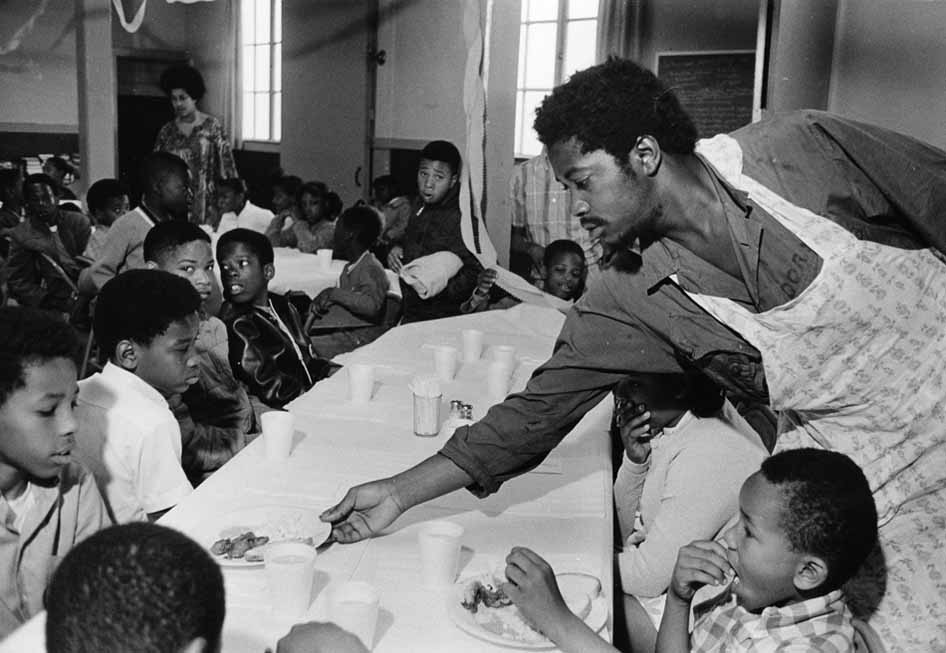
In April of 1970, FBI surveillance revealed that Ms. Seberg had donated $10,500 to the Black Panther Party, with a good portion of the money going to the Panther’s “Free Breakfast for Children” program (adjusted for inflation, Seberg’s donation would be $63,000 today). In April of 1970, Special Agent in Charge of COINTELPRO for the L.A. FBI office, Richard W. Held, wrote to Hoover asking for consent “to publicize the pregnancy of Jean Seberg” as the result of an extramarital affair with a member of the Black Panther Party. The concocted story would then be supplied to “Hollywood ‘Gossip-Columnists’ in the Los Angeles area.” Held proposed that the “publication of Seberg’s plight could cause her embarrassment and serve to cheapen her image with the general public.”
J. Edgar Hoover approved the operation, but with one stipulation, he advised the L.A. FBI office “to wait approximately two additional months until Seberg’s pregnancy would be obvious to everyone.” Hoover closed his memo with the following: “Jean Seberg has been a financial supporter of the BPP and should be neutralized.”
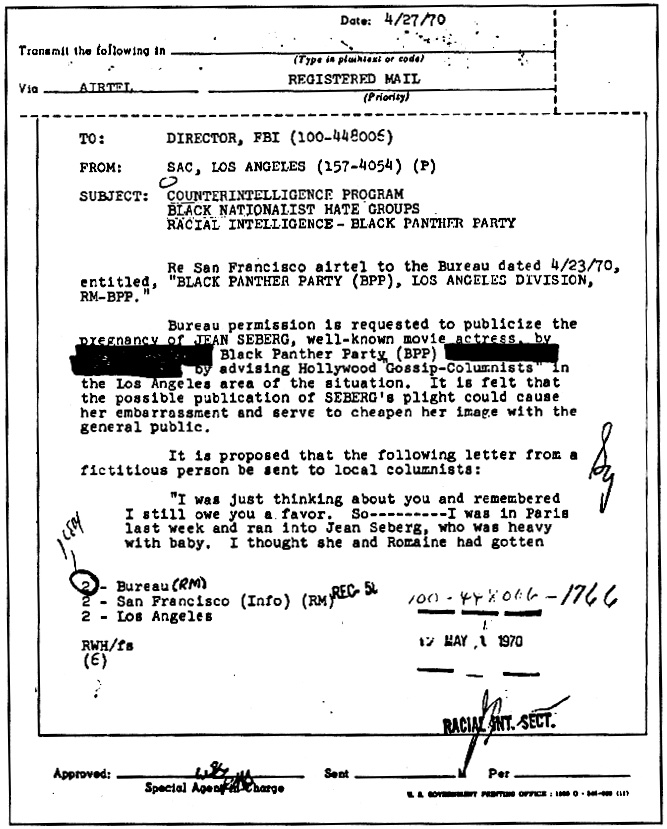
Agents at the Los Angeles FBI office wrote their anonymous letter with its fabricated contents, and surreptitiously delivered it to Los Angeles Times gossip columnist, Joyce Haber. The letter falsely claimed that Seberg was having an affair with Ray “Masai” Hewitt, the Minister of Education for the Black Panther Party, and furthermore, Seberg was pregnant with Hewitt’s child. At the time of the FBI orchestrated slander, Seberg was seven months pregnant and married to the French novelist and film director Romain Gary, her second husband and actual father of the baby.
Haber wrote up a snarky weasel worded story for her column based upon the provided “tip.” The Los Angeles Times published Haber’s article on May 19, 1970. Titled Miss A Rates as Expectant Mother, Haber wrote euphemistically. “Let us call her Miss A, because she’s the current ‘A’ topic of chatter among the ‘ins’ of international show business circles. She is beautiful and blonde.” To make sure readers knew who was being skewered, Haber added that “Miss A” had recently “burst forth as the star of a multimillion dollar musical,” referring to Paint Your Wagon. After reminding readers that the target of her scandalmongering was married to “a handsome European” (Gary), Haber wrote that her quarry “was pursuing a number of free-spirited causes, among them the black revolution,” and that “Miss A is expecting.” The story ended with, “Papa’s said to be a rather prominent Black Panther.”
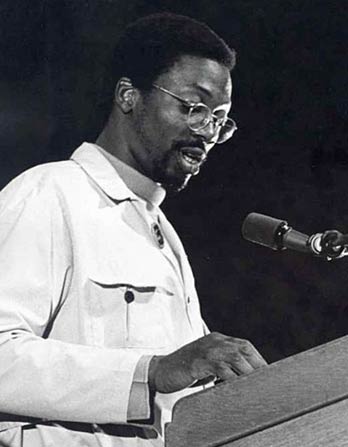
The malicious gossip published by the L.A. Times had predictable and injurious results. The lies printed in Haber’s syndicated column were picked up by Newsweek magazine, but unlike the L.A. Times, Newsweek went further by publishing the names of Seberg and Ray “Masai” Hewitt.
The lies spread when 100 papers across the U.S. picked up and amplified the falsehoods published in Newsweek. Seberg was distraught over the defamation campaign carried out against her by the propagandists of the so-called free press.
It is difficult for most people to imagine an onslaught of government backed vilification being aimed against them; who would publish your denials? But it was not just character assassination in the media that dismayed her, Seberg told friends of threatening phone calls, break-ins, and being under constant surveillance. Few believed her.
In a 2009 interview with The Times of London, Diego Gary, the son of Seberg and Romain Gary, said his “mother felt persecuted” by the FBI. Gary went on to say that “there were moments when she was very afraid. She hired two bodyguards to protect her because she had received so many threats.” Gary also called to mind that his mother’s friends thought Seberg was “paranoid” because of her complaints about being spied upon. Nico (1938-1988), the singer perhaps best known for her work with Lou Reed and the Velvet Underground, was a close friend to Seberg, and said the actress always “pointed out the FBI men who were constantly following her around.”
Seberg started to break down under the relentless pressure of the COINTELPRO operations aimed against her by the FBI. It was most likely psychological trauma over the persecution that caused Seberg to prematurely deliver her baby on August 23, 1970. Tragically the infant died four days later. Seberg arranged a public funeral for her deceased baby girl, Nina Hart Gary. The memorial service was held in Seberg’s hometown of Marshalltown, Iowa. In an act of open contempt towards the FBI and the sycophantic press, Seberg had her child laid out in an open casket so that the world could see the allegations made against her were not true.
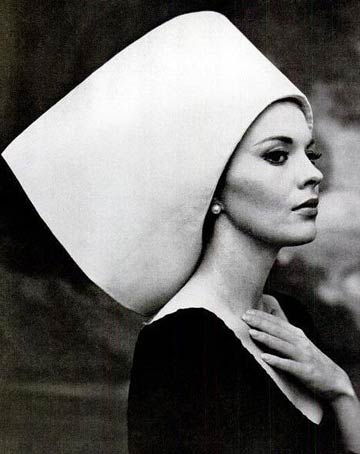
After the FBI smeared Seberg as a dangerous radical, it appears an unofficial Hollywood blacklist was launched against her. After playing a lead part in Airport, she was not offered any substantial roles in American films; she never again appeared in an American movie.
She resumed her film career in Paris, and in 1974 co-starred with Kirk Douglas in the British made film, Cat and Mouse (alternate title: Mousey). In spite of regular film work in Europe, Seberg never got over the loss of her daughter, persecution by the U.S. government, and defamation in the U.S. mass media.
Suffering from incapacitating depression, she began taking sedatives and drank heavily. Seberg disappeared on August 30, 1979. Ten days later she was found near her Paris apartment, sitting in her car, dead from an apparent overdose of barbiturates at 40-years old. However, the police grew increasingly suspicious that suicide was the cause of death.
Though divorced from Seberg since 1970, Romain Gary held a news conference after the police found her body. He would tell those gathered that his ex-wife went into shock after reading the lies published in the press about her, and that she was so upset she immediately went into labor. Gary blamed the FBI campaign of harassment for Seberg’s death. Just days later, on September 14, 1979, the FBI publicly admitted that it had planted lies about the actress in the U.S. press.
On June 22, 1980, French authorities revealed that there were no alcoholic beverage containers found in or around Seberg’s car, but her blood alcohol level was double the amount needed to make an individual comatose and incapable of moving without assistance. Police hypothesized that a person, or persons, were present at the time of Seberg’s death, and so a French court filed charges against “persons unknown” in connection to the actress’ death. Romain Gary would end up committing suicide in Paris on December 2, 1980.
In the aftermath of illegalities committed during the Watergate scandal of 1972-1974, the U.S. Senate convened the “United States Senate Select Committee to Study Governmental Operations with Respect to Intelligence Activities” in 1975. Named the “Church Committee” after its chairman, U.S. Senator Frank Church (D-ID), the committee denounced COINTELPRO, stating that: “Many of the techniques used would be intolerable in a democratic society even if all of the targets had been involved in violent activity, but COINTELPRO went far beyond that, the Bureau conducted a sophisticated vigilante operation aimed squarely at preventing the exercise of First Amendment rights of speech and association.”
In 1980 the Los Angeles Times obtained FBI files on Jean Seberg through the Freedom of Information Act, showing just how extensive FBI operations against Seberg were. Between 1969 and 1972 the FBI monitored Seberg’s bank account, tapped her phone calls, and kept logs on where and when she traveled. They shared intelligence files on Seberg with President Nixon’s domestic affairs chief John D. Ehrlichman as well as Nixon’s attorney general, John J. Mitchell (how the Nixon administration acted on these files is not known). The FBI supplied files on Seberg to U.S. embassies in Paris and Rome, as well as the Central Intelligence Agency (at the time the CIA was running “Operation CHAOS,” a massive, illegal domestic intelligence operation aimed against the antiwar movement and other U.S. dissidents).
The FBI also provided files on Seberg to military intelligence units belonging to the U.S. Secret Service. Reports to the Secret Service included a photo of Seberg and a letter from J. Edgar Hoover describing the actress as “potentially dangerous.” How the Secret Service responded to the information is not known. In 1970 the FBI placed Seberg on a list of individuals targeted for arrest should there be a national security emergency.
COINTELPRO was said to officially end in April of 1971, and the FBI made known its repudiation of the methods employed during the J. Edgar Hoover era.
The findings of the Church Committee in 1975 and the 1980 release of FBI files to the L.A. Times under the Freedom of Information Act, gave ample evidence of criminality on the part of the U.S. government regarding suppression of dissent in America. I would add that Nixon and Hoover acted against their political enemies in cloak-and-dagger style, with complete and utter secrecy. From the Watergate break-in to COINTELPRO, wire tapping, surreptitious mail opening, break-ins, and other police state tactics were used clandestinely. That notwithstanding, the Nixon administration never publicly claimed that it had the legal right to assassinate U.S. citizens on American soil.
Ms. Seberg’s fate is a cautionary tale when one considers the following. President Obama is running a massive surveillance campaign that spies upon every American and citizens of other countries; Obama has publicly justified this program in the name of “national security.” Obama presides over weekly meetings were he decides who will be placed on a “kill list” for overseas drone strike assassination. U.S. citizens have been placed on that list, and in Yemen on Sept. 2011 Anwar Awlaki became the first U.S. citizen to be killed in such a strike. Moreover, Obama’s Attorney General, Eric Holder, has said the president could authorize the killing of a U.S. citizen on American soil if “an extraordinary circumstance” presented itself. All of this is currently being conducted in the open.
My, how different things are today. Thank goodness for “Hope & Change.”
The Third Annual Jean Seberg International Film Festival was held in Seberg’s hometown of Marshalltown, Iowa. Conducted at the Orpheum Theater in Marshalltown from November 15 to the 17th, 2013, the three-day event celebrated the life and work of Ms. Seberg with screenings of eight of her films, including the world premiere of Jean Seberg: Actress, Activist, Icon, a documentary on the private life of the actress. Produced by filmmakers Kelly and Tammy Rundle, along with writer and filmmaker Garry McGee, the movie’s premiere was timed to coincide with what would have been Seberg’s 75th birthday. McGee was also the co-author of the recent book, Neutralized: the FBI vs. Jean Seberg, a detailed and well-documented book that examines the FBI’s program to destroy the actress’ career and reputation.
Two symposiums were also part of the festival, one was conducted by Professor Richard Ness of Western Illinois University and dedicated to Seberg’s film work, the other was led by Professor Horace Porter, Chair of African American Studies at the University of Iowa, on the subject of COINTELPRO and Seberg’s support of the Black Panther Party. Ness and Porter both appeared in interview sequences appearing in Movie Star: The Secret Lives of Jean Seberg.
I was born and raised in the City of Los Angeles, it is the metropolis where I live and work, a place with an identity almost completely entwined with the “entertainment industry.” Over the decades countless escapades of mine have taken place – literally and figuratively – beneath the shadow of the world famous HOLLYWOOD sign. But for all of this burg’s presumed open-mindedness, in the city of Los Angeles the 75th birthday of Jean Seberg went entirely unnoticed. No insightful articles from the Los Angeles Times nor memorials from industry publications like Variety or The Hollywood Reporter. No commemorative film screenings at the Academy of Motion Picture Arts and Sciences or the city’s art house movie theaters. Not a peep from the city’s vaunted “progressive” community either, only a deafening silence.

One could simply chalk up the indifference towards Seberg as nothing more than historic amnesia, but we are allowed or encouraged to forget certain historic events and individuals, while prodded and stirred to remember others. It all depends on the needs of Big Brother.
Yet, despite the hush from certain quarters, there is renewed interest in the life and work of Seberg, and I hope the musings from this web log will help expand that curiosity. Marshalltown’s Orpheum Theater just premiered Movie Star: The Secret Lives of Jean Seberg. It is the same movie house that hosted the 1957 gala premiere of Saint Joan, the actress’ first movie. All together, Seberg appeared in 37 films in the course of her all too short career; one can only imagine what the actress might have been able to contribute to the world of cinematic art had her career not been so cruelly destroyed.

